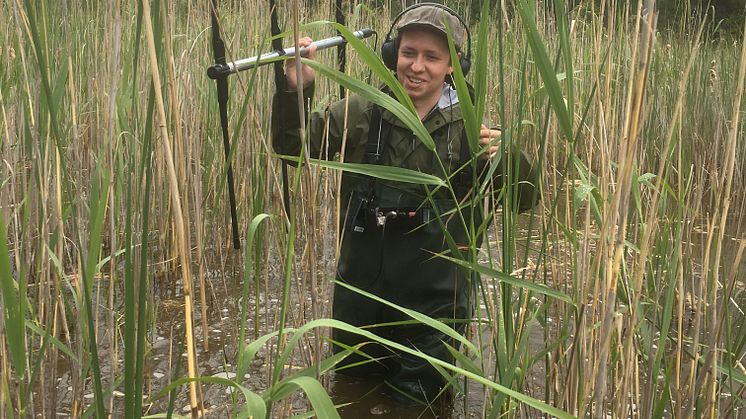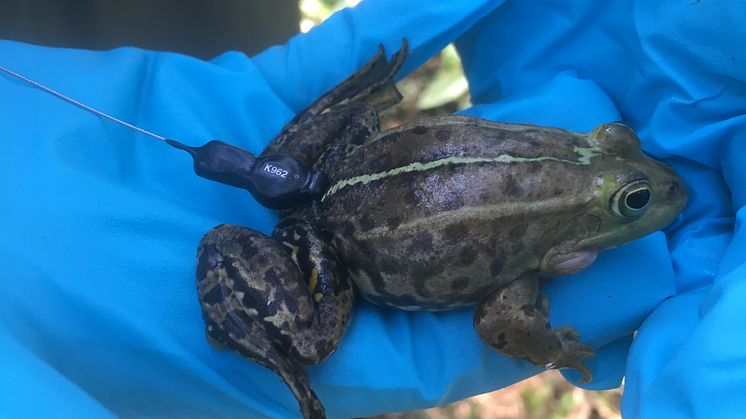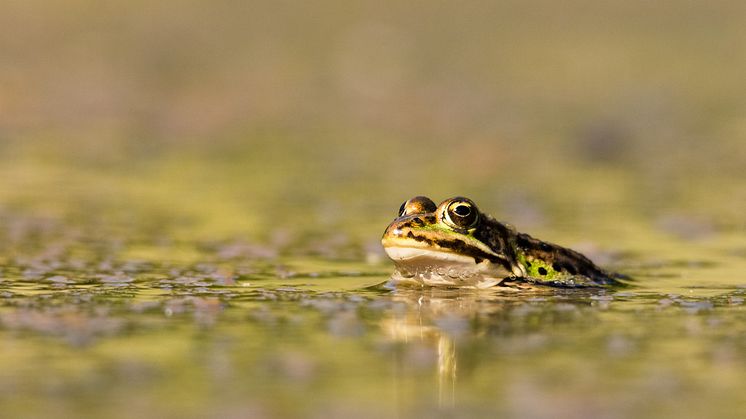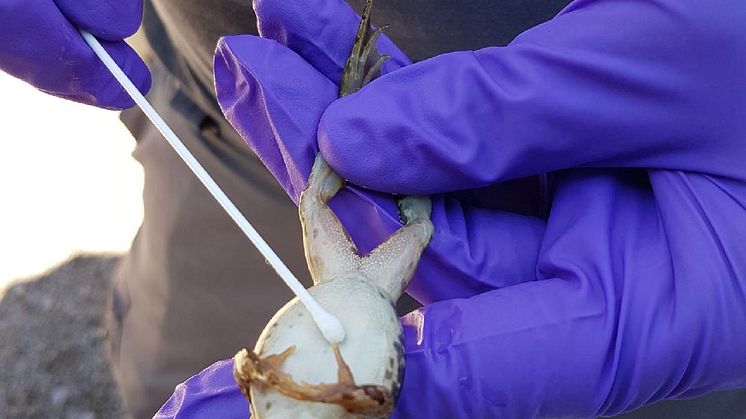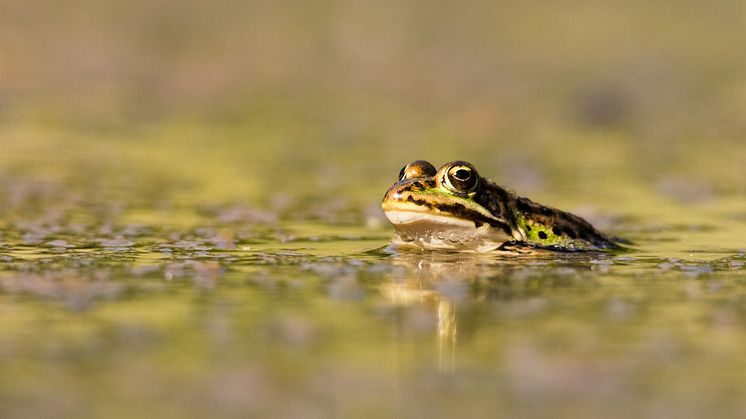
Press release -
Fungal infection hinders frog’s mobility
Pool frogs infected with the parasitic chytrid fungus Batrachochytrium dendrobatidis range over shorter distances. This is the conclusion of a study conducted by researchers at Uppsala University and the Swedish University of Agricultural Sciences (SLU), who have investigated how the fungus affects the mobility of the red-listed pool frog along the Uppland coast.
The fungus Batrachochytrium dendrobatidis is widespread globally and has reduced or eradicated several hundred species of amphibians. In the study, researchers investigated the occurrence of the fungus in pool frogs along the Uppland coastline from Forsmark up to Fågelsundet, focusing on how the fungus affects the frog’s movement patterns and how the fungus presents and changes in individuals over time.
The presence of the fungus was confirmed in all of the six ponds studied and in approximately one third of the frogs examined. By comparing results with a previous study, researchers were able to demonstrate that the fungus probably invaded the study area during the past decade.
When researchers studied mobility, they saw that infected frogs ranged over shorter distances than uninfected individuals but that some infected frogs appeared to be able to recover from the fungal infection.
“Our research illustrates a relatively new example of how the chytrid fungus can affect amphibians; i.e. through reduced mobility. This in turn may impact on amphibians generally, through an increased risk of predation, and on pool frogs in Uppland in particular, as they live in isolation and are dependent on ranging between ponds to reduce inbreeding,” says Simon Kärvemo, former postdoc at the Department of Ecology and Genetics at Uppsala University, now at the Swedish University of Agricultural Sciences (SLU).
The study also shows that the chytrid fungus is still invading new areas and that it is therefore important to continuously inventory and take samples from our amphibian populations in order to quickly detect whether and how these are declining due to the fungus.
Kärvemo et al (2020): Chytrid fungus dynamics and infections associated with movement distances in a red-listed amphibian, Journal of Zoology 2020, doi:10.1111/jzo.12773, https://doi.org/10.1111/jzo.12773
A film about the research project: https://www.youtube.com/watch?v=4ETk23qZZc0
For further information:
Simon Kärvemo, postdoc, Department of Ecology, Swedish University of Agricultural Sciences (SLU). Phone: +46 18 67 24 20, mobile: +46 70 693 76 28, email: simon.karvemo@slu.se
Anssi Laurila, Professor of Biology, Department of Ecology and Genetics, Uppsala University. Email: anssi.laurila@ebc.uu.se, phone: +46 18 471 6493
Topics
Uppsala University -- quality, knowledge, and creativity since 1477
World-class research and outstanding education of global benefit to society, business, and culture.
Uppsala University is one of northern Europe's highest ranked academic institutions. www.uu.se

